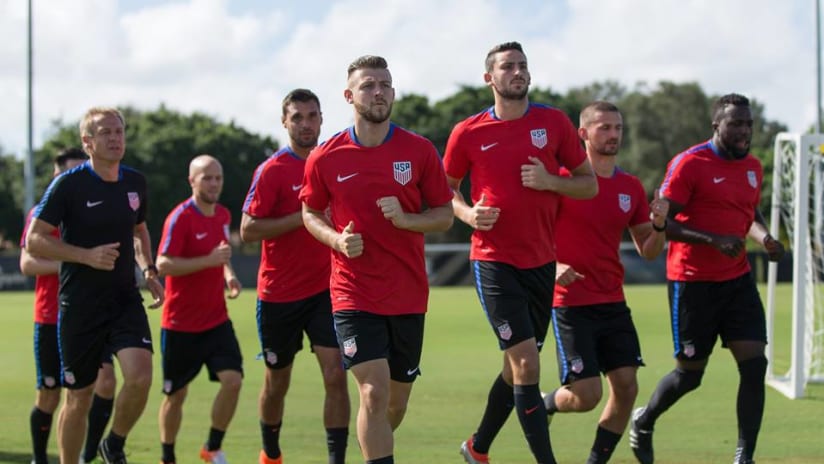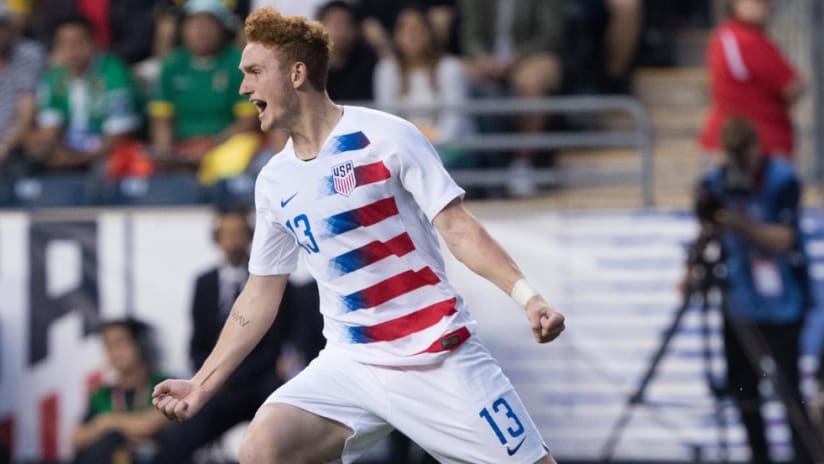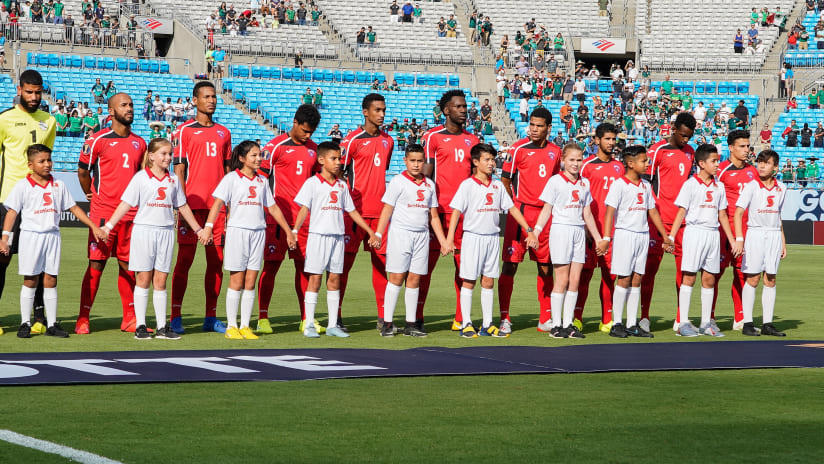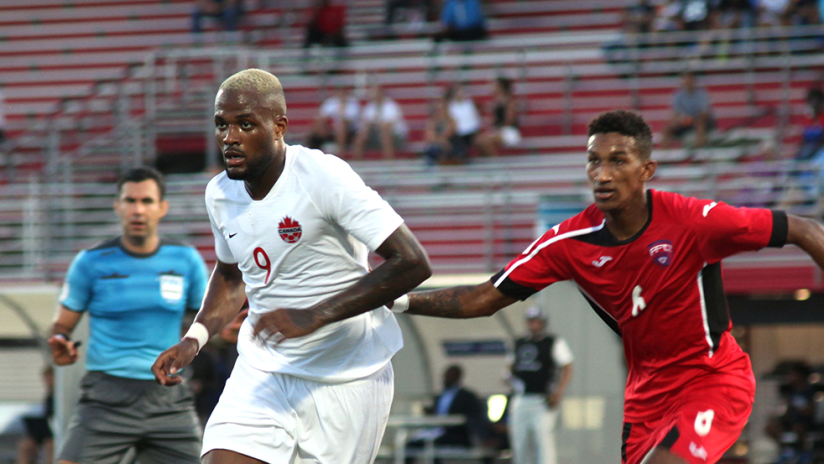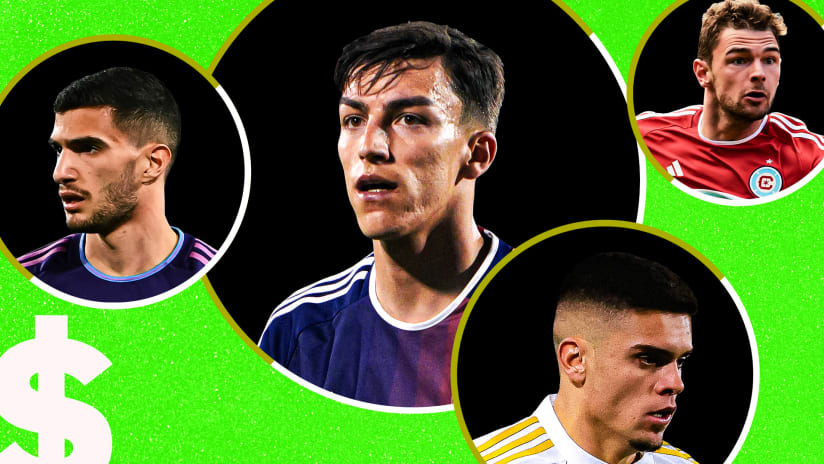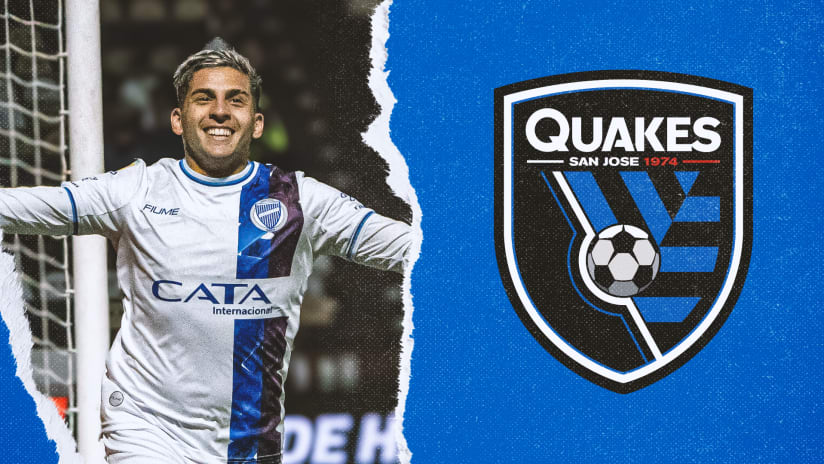MIAMI – Friday’s friendly match between the US and Cuba (the universe and potential hurricane winds willing) forms a perfect, history-making peak of ascendant forces (4 pm ET on ESPN2 and UniMás).
The first friendly between the countries in almost 60 years – the last in 1947 – marks, of course, another step in the détente between the two countries after decades of strained relations. At the same time, too, it marks a new high point for US Soccer, with a 23-man roster centered on young players and up-and-comers – and a new turning point in Cuba’s fast-growing soccer culture.
And yet, there’s not necessarily any huge intrigue behind how the whole event came to pass. In fact, you can chalk up a lot of it to a bit of scheduling kismet.
“With World Cup qualifying going on around the world, and some of the CONCACAF opponents not available because of the semifinal round of qualifying, we looked at different ways we could take advantage of this opportunity,” says Michael Kammarman, press officer for the US national team. “So, given the time and the place, Cuba was an option, and once it was discussed, everyone was super excited about it. So we went about the process of trying to organize the game with Cuba, and so far, that part’s been fantastic.”

Ex-MLS forward Brian Ching (right) in action for the USA against Cuba in a 2008 World Cup qualifier in Havana. Photo courtesy Claudia Daut / Reuters
Return to Cuba
However, this friendly match isn’t, as long-time US Soccer followers will remember, the first game between the US and Cuba on the island since the 1940s. The last one, in fact, unfurled recently enough that a couple of members of this week’s squad played in it. Toronto FC’s Michael Bradley and the New York Red Bulls’ Sacha Kljestan both figured on the team that visited Havana for a World Cup qualifying match on Sept. 6, 2008 at the Estadio Pedro Marrero.
“It was a fun trip. I remember we won 1-0 and Clint [Dempsey] had a nice goal,” Kljestan recalled this past Monday at USMNT training camp in Miami. “We all kind of knew how historic it was back then, and how cool it’s going to be for us to go down there now again.”
Times have dramatically changed in the two countries' relations between then and now. In 2008, with an embargo in full force, the US government all but precluded travel by Americans to the island, with only humanitarian, educational and other special visas allowed. Once on the island, it was technically illegal to spend any money. Indeed, only five American fans clandestinely made the trip to that match; they would become known in soccer circles as the “Cuba Cinco” (and we’ll have more on their story this week).
But in March, US President Barack Obama issued a landmark easing of travel and trade restrictions between the two countries. For the first time, Americans are allowed to travel to the island outside of special group tours – and even spend money – if they declare they are visiting for cultural appreciation. And for the first time in history, a healthy American Outlaws contingent even plans to travel to Havana and attend the game.
“Soccer in Cuba isn’t bogged down by a lot of the same baggage and institutions [as baseball],” says Guillermo Grenier, a professor of sociology at Florida International University’s Steven J. Green School of International and Public Affairs. “So you have a sense that this could be a vehicle for US-Cuban relations, US-Latin American relations to advance, as much as a sport can allow that to happen.”
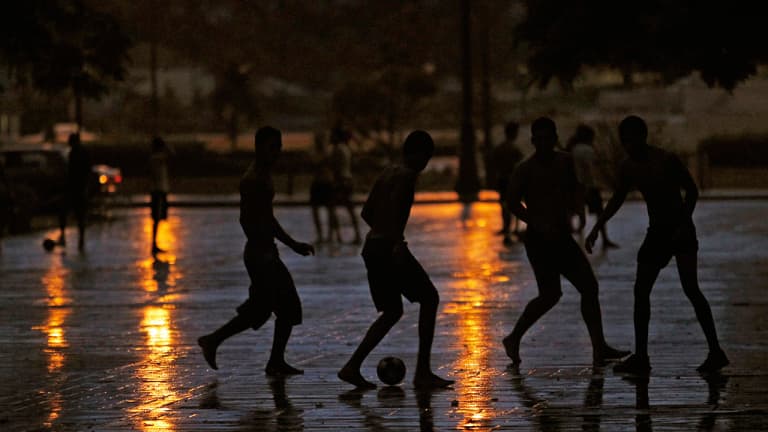
Youth players kick the ball around after a tropical shower in a Havana square in 2010. Photo courtesy Desmond Boylan / Reuters
Cuba's "sport of the future"
Beyond any political meaning, though, this presents a rare home game against a top-flight international team for an island nation best known for baseball. In recent years, soccer culture’s dramatic rise has threatened baseball’s dominance among younger Cubans.
One town, Zulueta, has long been considered the cradle of Cuban soccer, with its home club, FC Villa Clara, boasting some 13 league title wins since 1980. (The documentary Gol de Cuba explores this in depth). Now, the game’s spreading briskly outward from there, says Grenier.
“Zulueta it considers itself prideful for the fact that soccer is beginning to be futbol, and take hold of Cuba with the roots there,” he says. “There’s a real community feel there, and people are always out, and kids are always running around, so that kind of culture lends itself to [soccer], which folks are feeling is new. The sense is that this is a new sport for a new era.”
A small number of Cubans currently play professionally in the US, with the Sounders’ Ozzie Alonso enjoying the highest profile. A handful of others ply their trade in the NASL and USL, particularly at the Charleston Battery in the latter. All had to defect to pursue career opportunities outside Cuba.
Defectors are rarely discussed on the island – yet this match could provide a glimpse for spectators about the true cultural exchange provided by the global game.
“They see soccer as being a sport of the future,” Grenier says. “It would allow, in an athletic way, to have Cuba incorporate itself into a very broad international sports scene.”
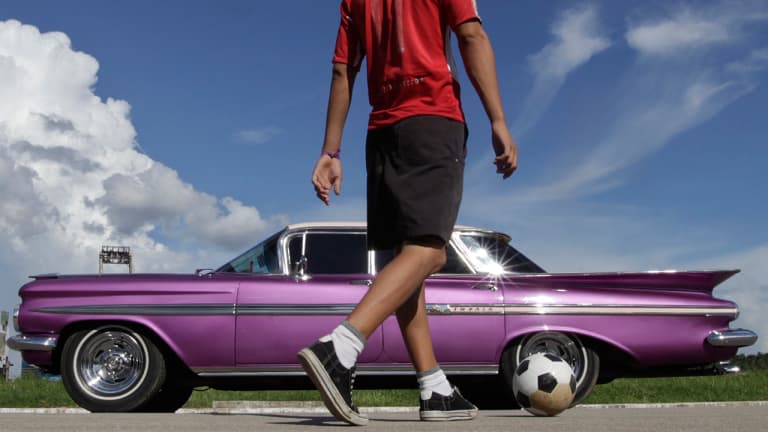
A boy dribbles a soccer ball past a 1959 Chevrolet Impala in Havana in September 2010. Photo courtesy Enrique de la Osa / Reuters
Business trip
For the US players’ part, all said in Miami that they’re certainly looking forward to exploring unfamiliar territory. But the fact remains – at the end of the day, the real meaning of the game for this squad is to prove their mettle ahead of a difficult start to the final round of World Cup qualifying against Mexico and Costa Rica in November. This is no propaganda tour; the US team is, naturally, paying their own way, and they’re definitely not treating it like a competitive cakewalk.
“Sure, it’s a friendly,” USMNT forward Jozy Altidore told reporters in Spanish in Miami on Monday. “But [the Cuban squad also] has players battling for their spot on the team. They’re not going to be an easy or relaxed team.”
The Cuban squad has echoed as much. “Beyond the result, we’re looking to prove to be a great team,” said their head coach, Idalberto Raul Mederos, to Cuban newspaper Granma. “We’re hoping that Cuban fans leave satisfied with how our players deliver.”
Meanwhile, US players know that head coach Jurgen Klinsmann will be keeping his eye firmly on what happens within the game’s white lines. “[It’s] a really good opportunity to have a closer look at them,” he said in Miami of the squad he called up for the Havana trip and a second friendly against New Zealand at RFK Stadium on Oct. 11.
“The bigger picture behind these 10 days, clearly, is preparing for [World Cup qualifying] against Mexico, preparing for [the match against them] on Nov. 11,” Klinsmann said. “We’ll gather as much information as possible about every single player in order to make up our mind.”

